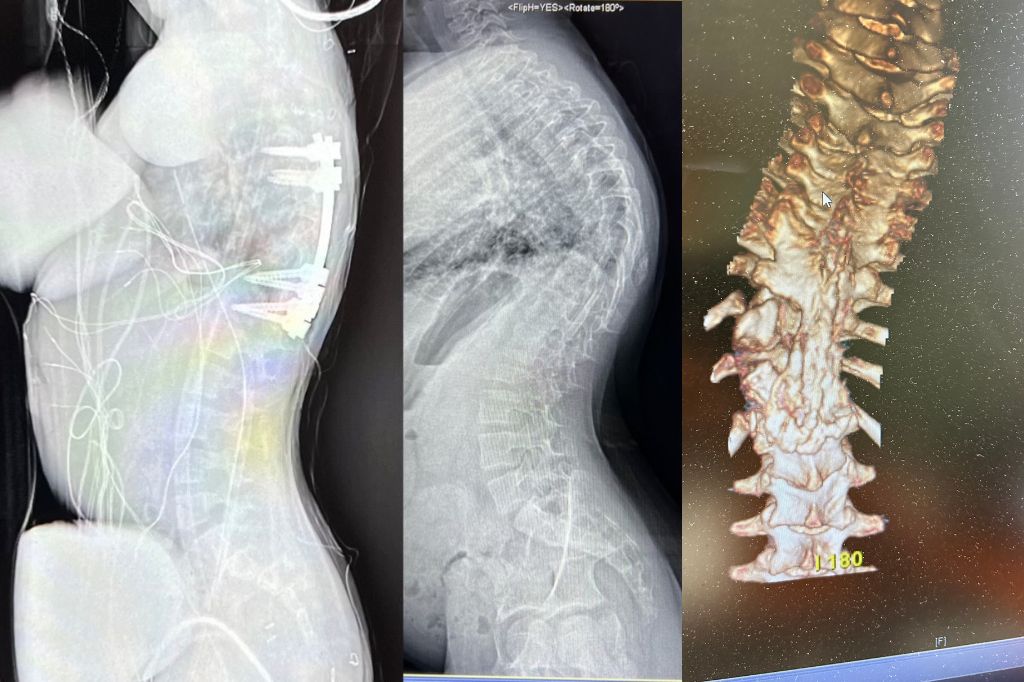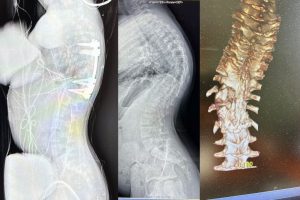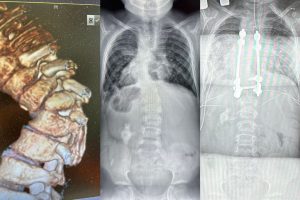
The human spine is a marvel of nature, a delicate balance of curves and alignments that allow us to stand upright, move flexibly, and support our body weight. However, sometimes, this intricate structure doesn’t develop as it should, leading to conditions like congenital kyphoscoliosis. This particular spinal deformity, while rare, can have profound implications for those affected. Let’s explore the intricacies of congenital kyphoscoliosis and the importance of early intervention.
What is Congenital Kyphoscoliosis?
Congenital kyphoscoliosis is a result of a developmental anomaly in the spine that occurs in utero, around the sixth week of gestation. It’s a multiplanar deformity, meaning it affects the spine in multiple directions.
The Root Cause
The deformity arises due to a failure in the spinal vertebrae’s formation or separation. Specifically, a condition called hemivertebrae is often the culprit. In this scenario, either the left or right half of a vertebra fails to develop, leading to growth on only one side of the spine. This asymmetrical growth during childhood results in both scoliosis (a sideways curvature) and kyphosis (a forward curvature).
The Implications
As children with congenital kyphoscoliosis grow, the curves in their spine can progress aggressively, sometimes becoming alarmingly severe. If left untreated, these curves can severely impact heart and lung function, making early intervention crucial.
A Case Study: Addressing Congenital Kyphoscoliosis in a Young Girl

To truly grasp the complexities of this condition, let’s consider the case of a nine-year-old girl with Down syndrome. She developed a rapidly progressing thoracic curve due to a left hemivertebra, resulting in both scoliosis and kyphosis.
The Treatment Approach
Addressing her condition required a two-pronged surgical approach. First, the hemivertebra was removed from the front of the spine (anteriorly). This was followed by selective stabilization from the back of the spine (posteriorly) using screws and rods. This comprehensive approach allowed for a multiplanar correction, stabilizing the deformity and eliminating any chance of recurrence.
The Importance of Early Intervention

By addressing her congenital scoliosis at a young age, the treatment was more effective, and fewer spinal levels needed intervention. This case underscores the importance of early detection and treatment to prevent more severe and potentially life-threatening spinal deformities later in life.
The Path Forward
Congenital kyphoscoliosis, while challenging, is treatable, especially with early intervention. Recognizing the signs, understanding the condition, and seeking expert care are crucial steps in ensuring the best possible outcomes for those affected.
Ready for Expert Care?
If you or a loved one is grappling with spinal deformities or seeking more information on congenital kyphoscoliosis, reach out to our dedicated team led by Dr. Siambanes. We’re committed to providing comprehensive, compassionate care, ensuring every patient receives the best possible treatment tailored to their unique needs.








